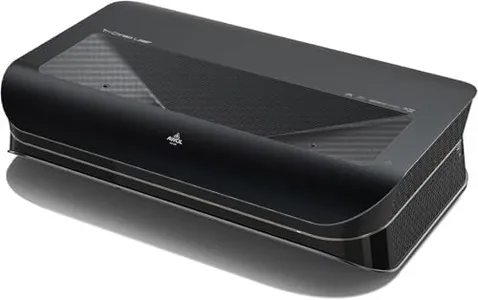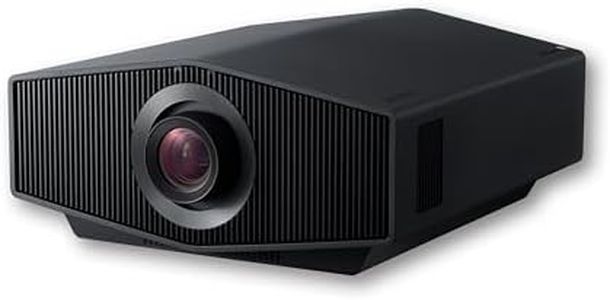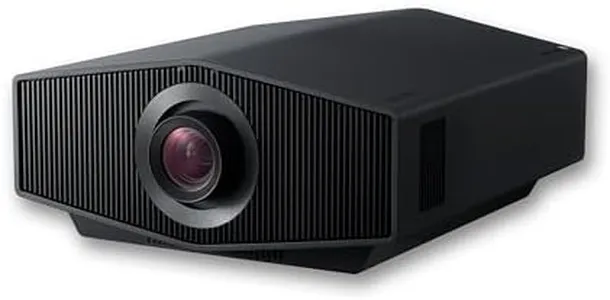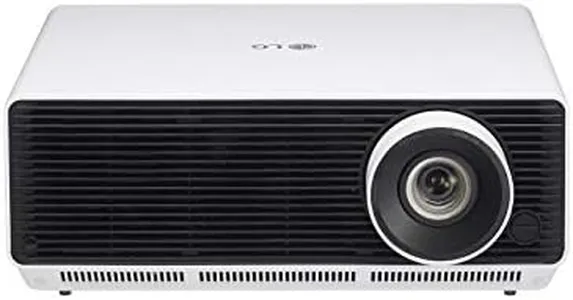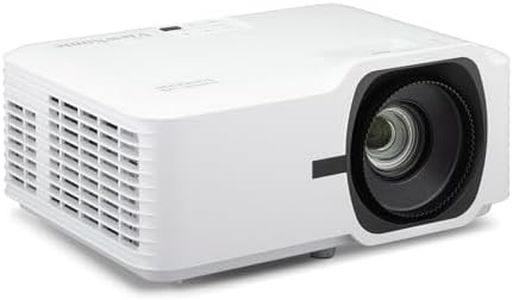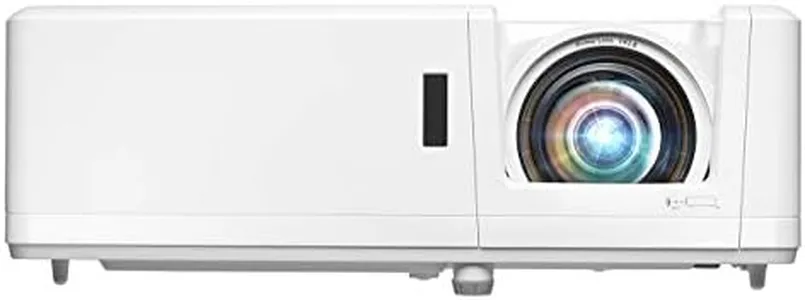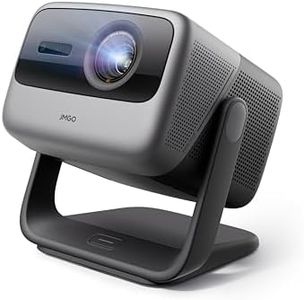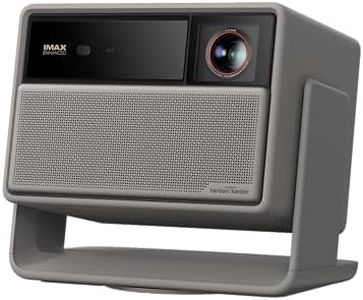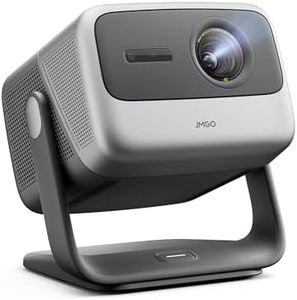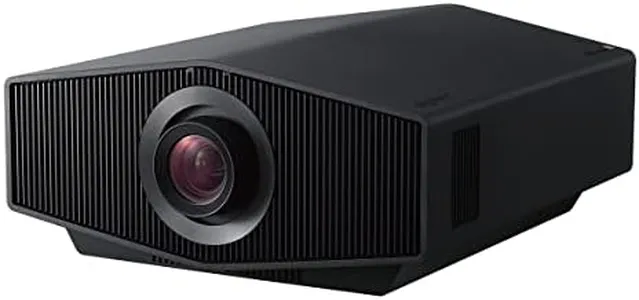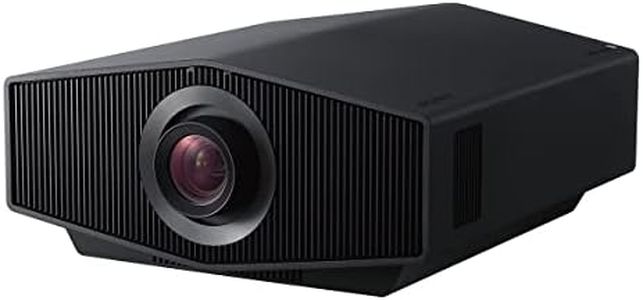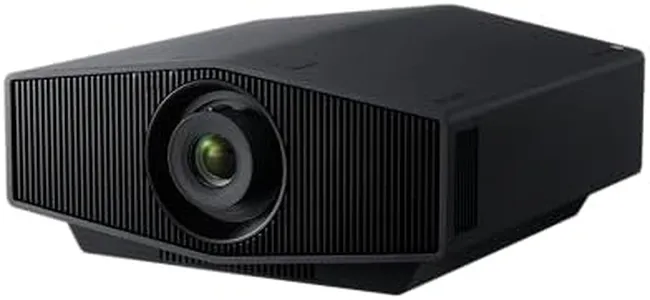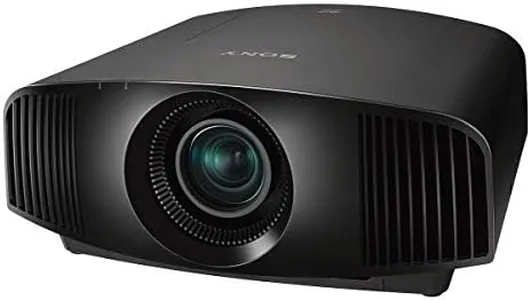10 Best Projectors 2025 in the United States
Our technology thoroughly searches through the online shopping world, reviewing hundreds of sites. We then process and analyze this information, updating in real-time to bring you the latest top-rated products. This way, you always get the best and most current options available.

Our Top Picks
Winner
Sony BRAVIA Projector 8 - 4K HDR Laser Home Theater Projector with Native 4K SXRD Panel ( VPL-XW6100ES), Black
Most important from
3 reviews
The Sony BRAVIA VPL-XW6100ES is a strong choice for home theater enthusiasts looking for a high-quality 4K projector. It offers a native 4K resolution (3840x2160) with Sony’s SXRD panel, ensuring sharp and detailed images. The brightness level of up to 2,700 lumens, powered by a long-lasting laser light source, helps produce vibrant and clear visuals even in moderately lit rooms. The laser lamp offers an impressive lifespan of around 20,000 hours, reducing the need for frequent replacements.
Sony’s advanced image processing and color technologies, including TRILUMINOS PRO and Live Color Enhancer, work together to deliver rich, natural colors and high contrast with wide color gamut coverage (95% DCI-P3). The projector also supports HDR for more lifelike picture quality. Lens features such as advanced crisp-focused optics and picture position memory add convenience by allowing easy adjustments and preset recall for different screen formats.
Connectivity options primarily include HDMI, which is standard for home cinema setups. At around 40 pounds and sizable dimensions, this model is best suited as a dedicated home theater fixture rather than a portable projector. The projector does not emphasize built-in speakers, so an external audio system is recommended for a full cinematic experience. The Sony VPL-XW6100ES excels in delivering stunning 4K HDR image quality with excellent color accuracy and brightness longevity, making it ideal for serious home cinema users who prioritize picture quality over portability or built-in audio.
Most important from
3 reviews
Sony BRAVIA Projector 9 - 4K HDR Laser Home Theater Projector with Native 4K SXRD Panel (VPL-XW8100ES), Black
The Sony BRAVIA Projector 9 (VPL-XW8100ES) is a high-end home cinema projector designed for those who want a top-quality 4K viewing experience. It features a native 4K resolution of 3840 x 2160 pixels, ensuring sharp and detailed images. With up to 3,400 lumens of brightness, it can deliver vibrant and clear pictures even in rooms that aren’t totally dark. The laser light source not only provides consistent brightness but also offers a very long lamp life of about 20,000 hours, meaning less frequent replacements compared to traditional lamps.
Its advanced optics and Sony’s XR Processor enhance color accuracy and contrast, producing rich, natural colors with the help of technologies like TRILUMINOS PRO and Wide Dynamic Range Optics. This means you get bright highlights and deep blacks, making movies and shows look more lifelike. The projector also stores picture settings for different screen formats, which is convenient if you switch between setups.
The projector supports HDMI connectivity, which is standard for home theater equipment. It is quite large and heavy at 40 pounds, making it better suited for a fixed home theater setup rather than frequent moving. This Sony model is an excellent choice for those who prioritize outstanding image quality, long-lasting brightness, and detailed colors in a home cinema environment, though its size may limit portability and flexibility.
LG ProBeam 4K (3,840x2,160) Laser Projector with 5,000 ANSI Lumens Brightness, 20,000 hrs. life, 12 Point Warping, & Wireless Connection
Most important from
7 reviews
The LG ProBeam 4K projector stands out for its impressive 4K resolution and high brightness of 5,000 ANSI Lumens, making it suitable for various environments, from home cinemas to business presentations. Its sharp image quality is enhanced by HDR10 compatibility, which brings out vibrant colors and greater detail, ideal for both movies and gaming. The long lamp life of 20,000 hours means you won’t have to worry about frequent replacements, making it a cost-effective option over time.
In terms of connectivity, the projector offers USB and HDMI options, as well as integrated Wi-Fi, allowing for easy wireless streaming and browsing. This feature is particularly beneficial for users who want to access content without the hassle of cables. Furthermore, the projector’s portability makes it easy to transport, which is a plus for those who may need to use it in different locations.
While the ProBeam excels in many areas, it might not be the best choice for everyone. Its price point might be on the higher side, which could be a consideration for budget-conscious buyers. Additionally, while it performs well in various lighting environments due to its brightness, optimal performance is still best in darker settings. Users who require a projector for outdoor use might need to consider how well it performs in daylight.
